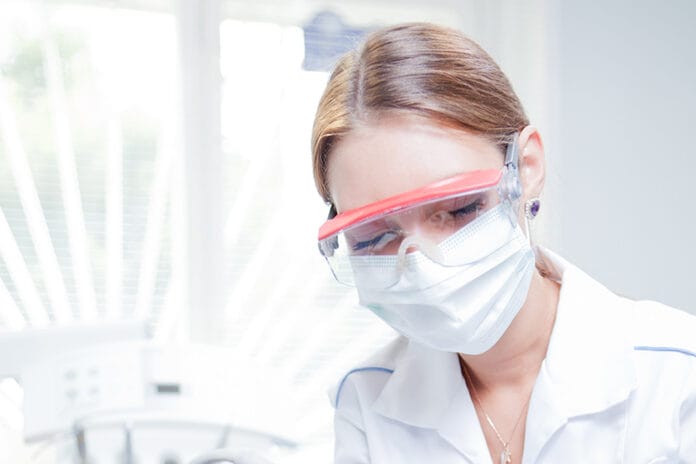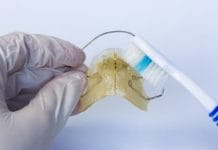We are all aware that the workforce that helps keep the economy moving forward has undergone major changes since the beginning of the COVID-19 pandemic. You have likely seen some changes within your area, including businesses shortening hours, employing only skeleton crews, and lacking products in stock.
Changes within the dental profession are no exception. For whatever reasons, clinicians are in short supply these days. Maybe some previous dental professionals opted for early retirement or made a career change since the pandemic. Regardless of the reasons, there is a great need for temporary or fill-in assistants, hygienists, administration, and dentists in my area. I see posts on social media in places all across the country with the same need.
Demand for My Dental Temping Services
I recently decided to put my name out there and fill in when I could. I have been amazed at the number of dental offices that reach out to me weekly who need help in their hygiene department. Sometimes it is because their regular hygienist is out sick; other times, it is due to the hygienist being on vacation, maternity leave, or just an open hygiene position they have not been able to fill.
Luckily for me, I have been as busy as I want to be, which averages three to four days weekly. While temping, I have noticed that dental offices differ greatly in their culture, philosophy, treatment modalities, and how they accomplish their patient care and daily duties. Difficulties can arise if you are used to using certain products, instruments, or software. Those products may be unavailable while temping, and you have to adapt or learn on the go from office to office.
I will say that temping may not be for you if you are someone who thrives on familiarity, routines, and comfort zones. Through the years, my co-workers have dubbed me “Steady Eddie” for my ability not to get thrown off by changes or problems that arise. I can adapt to most situations, whether it be a change in my patient schedule, a change in needed treatment, or reluctant patients who need extra TLC. I am able to change gears easily, and those fellow co-workers probably are not one bit surprised that temping has been a really good fit for me. I like the challenges, change of pace, and learning opportunities that temping offers.
Helpful Hints for Temping
The following is a small list of nine things I have experienced and worked through that you may find helpful when or if you decide to offer your hygiene services on a temporary or even full-time basis.
1) Work out your salary arrangements prior to accepting the offer.
Some offices pay a daily rate, and some prefer hourly. Some will do same-day pay while others do not. Because dental hygienists are under the supervision of a dentist even when temping, they are not considered independent contractors but employees and should not be paid with a 1099. Before accepting a temp job, it is important to have clarification from the office you will be temping at regarding when and how you will be paid.
Whatever your expectations are, they need to be discussed and agreed upon with whoever is in charge of making those decisions prior to accepting the offer to work with someone. I’ve found that in some offices, the doctor makes these decisions though it can be the responsibility of the office manager. Just have the conversation to save time and possible aggravation for either party.
2) Figure out how far you are willing to travel for your temp assignments.
I have had offers that include an overnight stay in a hotel if I would be willing to work a three-day stretch at an office quite a distance away. If you don’t mind driving a further distance, like the adventure of a new area, and will be compensated accordingly, you may find that type of offer an interesting assignment.
I prefer to keep my travel distance within a two-hour range of my hometown, and I try to keep my fuel cost for travel low by staying somewhat local. Also, I don’t like dealing with much traffic, so I’m choosy about the areas where I agree to work, and I like to sleep in my own bed every night. But to each their own.
3) Discuss the job requirements and expectations.
As I mentioned, each office can vary greatly. Other than your usual patient care (reviewing health history, oral cancer screening, periodontal charting, radiographs, periodontal debridement, floss, OHI), be sure to address what is expected of you. Answering phones, scheduling recall, restocking, sterilization, office cleaning duties, and assisting duties are all examples I have run across.
4) Be sure you understand the protocols used for each office.
What are the COVID protocols for patients and employees? What intervals are radiographs taken? What type of radiographs does the doctor prefer: Vertical bitewings for patients with severe bone loss, anterior periapicals in addition to four bitewings? What is the treatment protocol for active periodontitis? What is their protocol for late patients? What is their protocol for patients that need premed?
Are new patients seen by the hygienist or doctor first? If new patients are seen by the hygienist first, does your state’s dental board (dental practice act) allow that? Some of this is learned throughout the day as the subject arises, but if you don’t know, please ask. Don’t assume to know what that office prefers. Better to know than to guess.
5) Know your worth and charge accordingly.
When offering your hygiene services, charge for what you bring to that office; don’t gouge but be compensated for what you consider fair.
6) Don’t show up as the superhero there to save the day.
Yes, you are there to help at a needed time in that office for whatever reason, and they would likely be struggling with having to rework the schedule and even cancel some patients if you weren’t there. Be gracious about coming in to help.
After all, you are being paid to be there, and you are there to try and work as seamlessly as possible for the office that needs you. Most offices will be very thankful you are there and will verbally let you know, which is more than enough, but you may even have some that buy your lunch or give you a small gift. It’s happened to me!
7) Get a calendar, use your appointment reminder on your phone, or even Post-it Notes.
Do whatever you need to accurately keep up with the dates you have committed to work. At first, I could just remember the few offices where I was temping. However, as I added more offices, locations, and dates, I had to find a better way.
I’m somewhat old school, so I have a calendar to keep track of all my temp assignments so I can see them quickly and easily. If you are more tech-savvy than I am, you may be able to use an app made for organizing and scheduling work dates. Most importantly, if you have committed to work, that office depends on you to be there. So make every effort to honor that commitment.
8) Be open-minded and adaptable.
You will most likely run across hand instruments and ultrasonic inserts, sterilization machines, home care products, radiograph units, communication techniques, medicaments, and software that are unfamiliar to you. There may be new techniques used you’ve not seen before.
While temping recently and placing sealants were on my schedule, I was introduced to a vacuum isolation system. Learn from these experiences and expand your repertoire. You may possibly find a new way to encourage your patients or find a new favorite home care aid, instrument, or handpiece. I personally love the cordless prophy handpiece I have had a chance to use.
9) Get your name out there.
Staffing agencies, dental job websites, and apps can be used to help find potential permanent and temp jobs. However, I have not gone through staffing agencies and do not have any firsthand knowledge of that process.
I feel that a staffing agency in larger, more urban areas could be beneficial for hygienists looking for temp positions simply due to the number of offices they might represent. My area is more rural, and that option did not work for me.
What I did was twofold. I posted offering my hygiene services on a local dental jobs social media page and sent resumes to dental offices in my area. I made follow-up calls to inform offices of my availability to work. From there, it just became networking and word of mouth, one person sharing with another I was available, being added to their list of temps, and then the jobs began.
In Closing
Most importantly, do what you love ‒ dental hygiene and taking care of patients’ needs daily, whether it be through comprehensive patient education on aspects of home care or educating about nutrition. Taking time to explain needed treatment options and providing quality individualized clinical care and recommendations to your patients are things that matter so much. Always be willing to give a listening ear or a needed smile and continue to do what you do best which is care for your patients.
Before you leave, check out the Today’s RDH self-study CE courses. All courses are peer-reviewed and non-sponsored to focus solely on high-quality education. Click here now.












